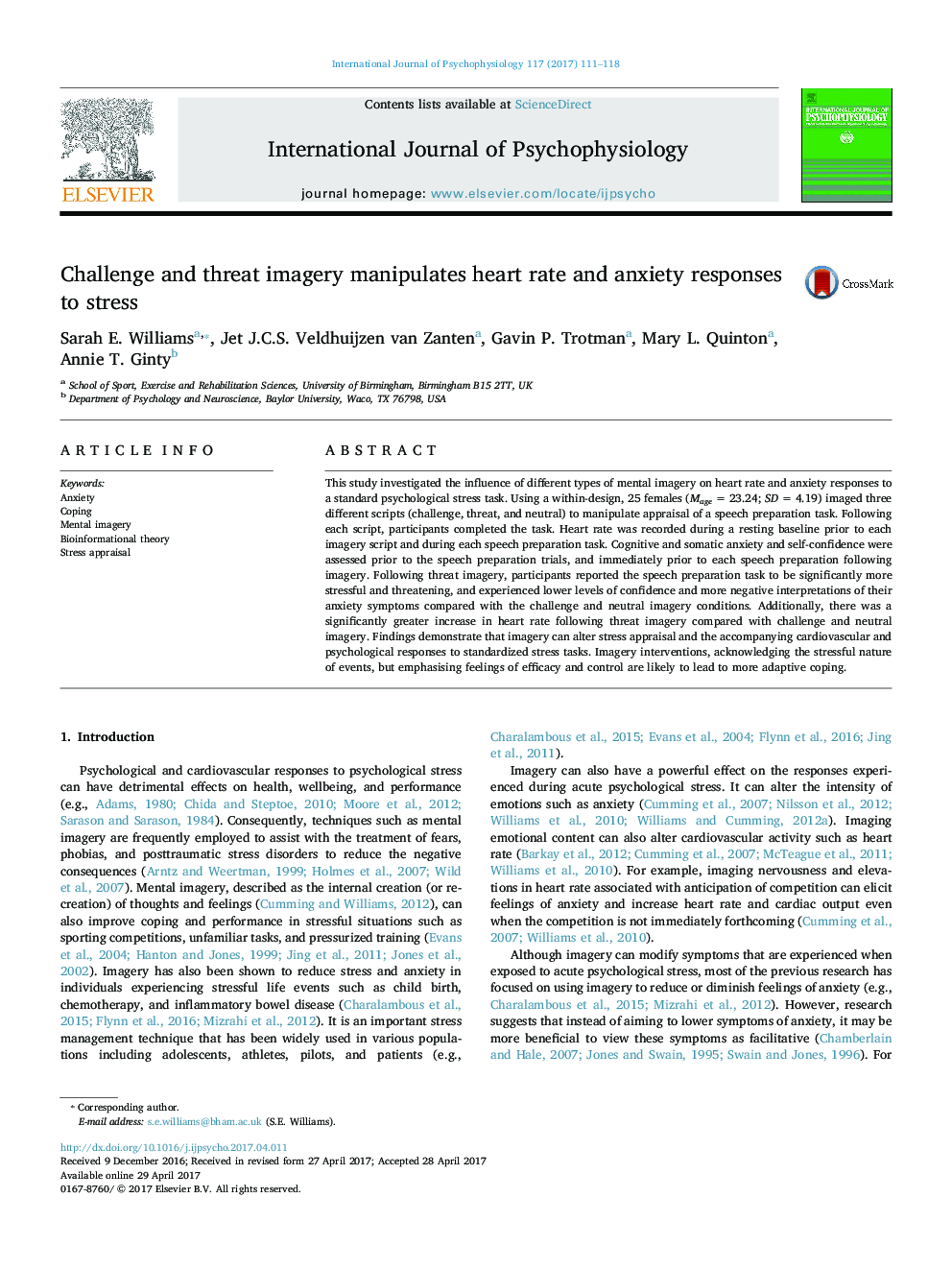| Article ID | Journal | Published Year | Pages | File Type |
|---|---|---|---|---|
| 5042241 | International Journal of Psychophysiology | 2017 | 8 Pages |
â¢Three stress tasks were completed following challenge, threat, and neutral imagery.â¢Significantly more stress and threat were experienced following threat imagery.â¢Significantly lower confidence was experienced following threat imagery.â¢Significantly more negative anxiety was experienced following threat imagery.â¢Significantly greater heart rate was experienced following threat imagery.
This study investigated the influence of different types of mental imagery on heart rate and anxiety responses to a standard psychological stress task. Using a within-design, 25 females (Mage = 23.24; SD = 4.19) imaged three different scripts (challenge, threat, and neutral) to manipulate appraisal of a speech preparation task. Following each script, participants completed the task. Heart rate was recorded during a resting baseline prior to each imagery script and during each speech preparation task. Cognitive and somatic anxiety and self-confidence were assessed prior to the speech preparation trials, and immediately prior to each speech preparation following imagery. Following threat imagery, participants reported the speech preparation task to be significantly more stressful and threatening, and experienced lower levels of confidence and more negative interpretations of their anxiety symptoms compared with the challenge and neutral imagery conditions. Additionally, there was a significantly greater increase in heart rate following threat imagery compared with challenge and neutral imagery. Findings demonstrate that imagery can alter stress appraisal and the accompanying cardiovascular and psychological responses to standardized stress tasks. Imagery interventions, acknowledging the stressful nature of events, but emphasising feelings of efficacy and control are likely to lead to more adaptive coping.
